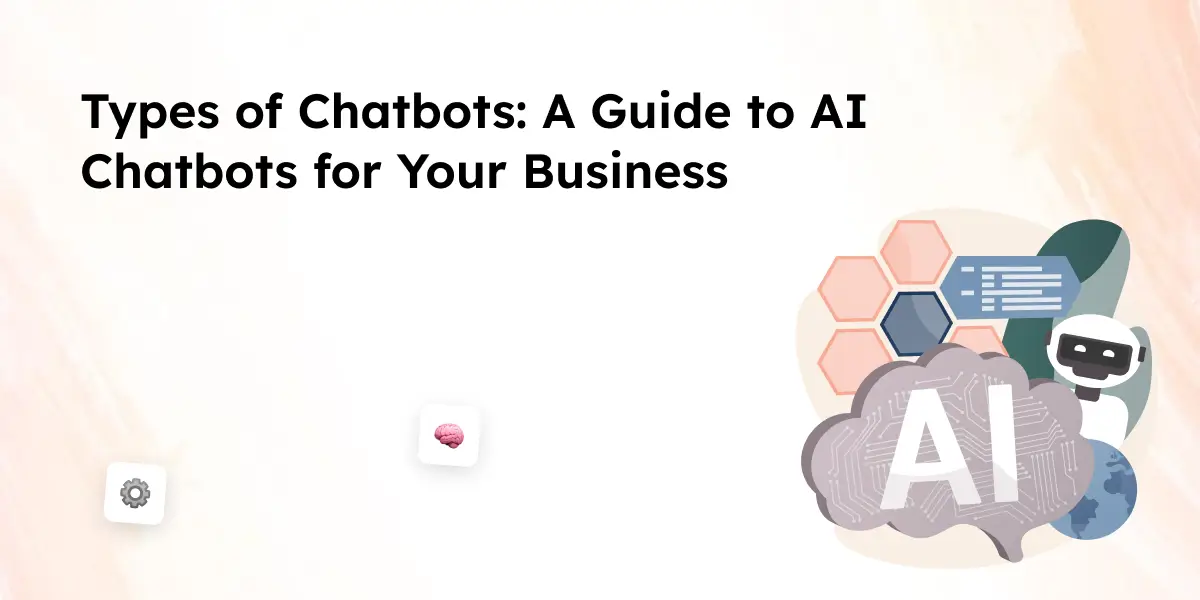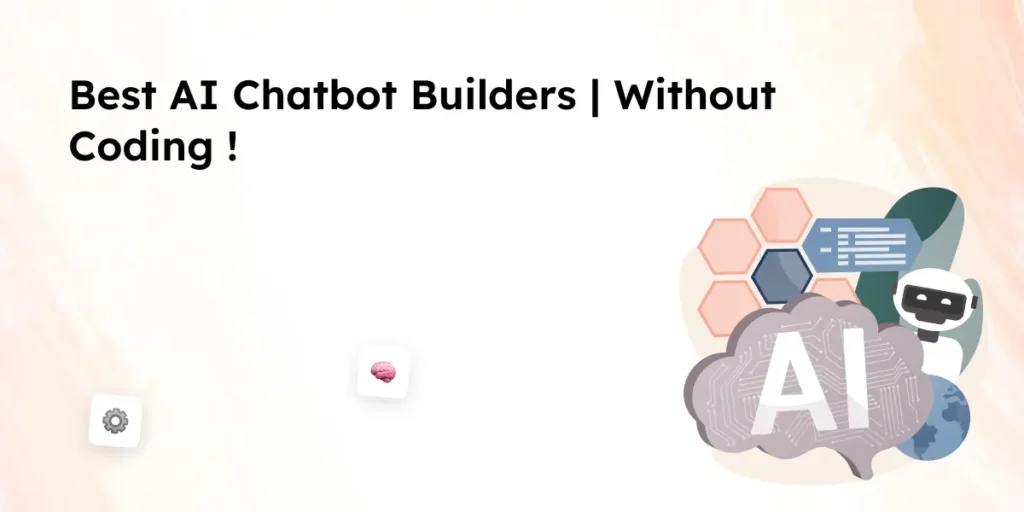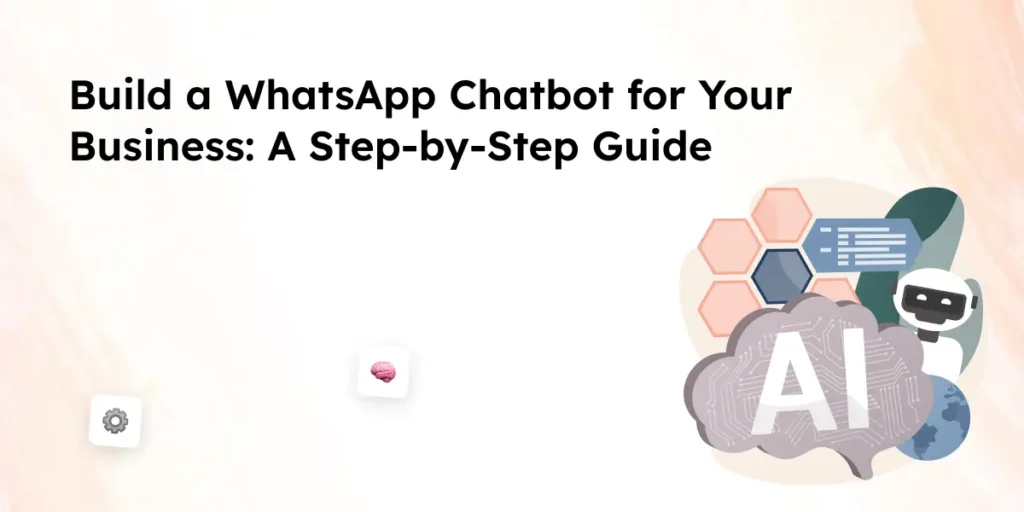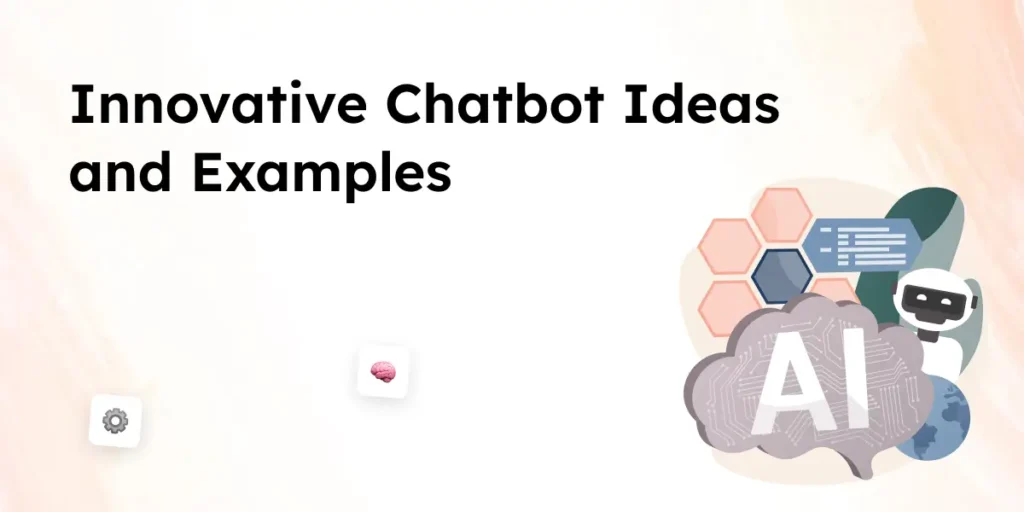Chatbots have become essential for businesses looking to streamline communication, improve customer engagement, and automate responses. With advancements in chatbot technology, companies can choose from different types of chatbots to enhance customer interactions. These bots simulate human conversation and help businesses manage support, sales, and general inquiries efficiently.
This guide explains the various types of chatbots available today, how they work, and which chatbot for your business makes the most sense. Whether you’re looking to build an AI chatbot or integrate an AI-powered chatbot into your system, understanding chatbot technology is the first step.
What Are Chatbots?
A chatbot is an AI bot or software program designed to interact with users via text or voice. Chatbots process user input, understand intent, and provide relevant responses. Advanced chatbots use natural language understanding and artificial intelligence to improve user experience. Some chatbots offer simple button-based menus, while others use deep learning to generate dynamic replies.
Chatbots operate through predefined rules or machine learning models. Businesses use AI and natural language processing to make chatbots smarter, allowing them to handle customer service inquiries, automate workflows, and even assist in sales.
Why Are Chatbots Important?
- Enhance customer support by providing instant replies.
- Reduce dependency on human agents for repetitive queries.
- Improve customer engagement through personalized responses.
- Work across messaging apps, websites, and voice assistants.
Chatbots can also help in automating business operations, making them a valuable asset for companies aiming to scale support without increasing costs.
Different Types of Chatbots and How They Work
There are diverse types of chatbots, each designed to serve specific purposes. Some rely on structured decision trees, while others use AI and ML to generate human-like conversations.
1. Rule-Based Chatbots: The Basics of Chatbot Technology
Rule-based chatbots, also known as rule-based bots, operate on predefined conditions. They follow a decision tree to guide conversations and provide relevant answers. These declarative chatbots are best for businesses needing structured responses, such as FAQs and support queries.
Use cases of chatbots in rule-based systems:
- Automated responses for customer service chatbots.
- Handling routine queries without human agents.
- Interactive guides for common issues in tech support.
However, rule-based chatbots can only respond to specific commands and fail when queries fall outside their programmed rules.
2. AI Chatbots: Enhancing User Experience with Artificial Intelligence
AI-powered chatbots use natural language processing and machine learning to understand user intent and provide accurate responses. These chatbots represent a shift from basic automation to smart interactions. AI capabilities allow them to process complex questions, making them valuable in customer service, sales, and lead generation.
AI chatbots require substantial data to train models effectively. Using AI-powered assistants improves accuracy, making conversations more natural. Many businesses build AI chatbots to improve engagement and automate workflows.
Key Benefits of AI Chatbots:
- Handle Complex Queries: AI-powered chatbots can process diverse customer inquiries using natural language understanding, making interactions more human-like.
- Continuous Learning: These bots improve over time with machine learning, adapting to new queries and refining their responses.
- Improve Customer Engagement: AI chatbots keep conversations flowing naturally, leading to better customer interactions and higher satisfaction.
3. Keyword Recognition-Based Chatbots: Understanding User Input
These chatbots use AI and natural language understanding to detect keywords in user messages. When a user submits a query, the chatbot scans for relevant terms and provides appropriate responses.
Chatbot examples of keyword-based systems include:
- Automated product recommendations in eCommerce.
- Customer support bots that provide quick answers.
- Virtual assistant services that recognize specific phrases.
While keyword-based chatbots allow flexibility, they may struggle with complex questions without proper training.
4. Menu-Based Chatbots: Guided Conversations with Buttons
Button-based chatbots, also known as menu-based chatbots, provide users with predefined options to choose from. They are easy to build and do not require AI capabilities, making them suitable for businesses that need a structured chatbot for customer inquiries.
Common applications of chatbots with menus:
- Food ordering bots in the restaurant industry.
- Automated appointment booking systems.
- Interactive support guides in mobile apps.
These bots are limited by their predefined options but work well for structured interactions.
5. Contextual Chatbots: Delivering a Personalized Experience
Contextual chatbots use AI and deep learning to remember past interactions. Unlike rule-based chatbots, they adapt to user behavior and provide more personalized responses.
Benefits of chatbots with contextual memory:
- Enhance customer engagement by recalling past conversations.
- Improve user experience by offering tailored recommendations.
- Reduce repetitive inputs from returning customers.
Contextual bots are widely used in conversational AI chatbots for eCommerce and customer service.
6. Voice Chatbots: The Future of Conversational AI
Voice chatbots use AI-powered voice recognition to interact with users through speech. These advanced chatbots process spoken queries and provide real-time responses, making them useful in customer service and automation.
Voice AI assistants can be used for:
- Hands-free customer support in call centers.
- Smart home assistants like Alexa and Google Assistant.
- AI-powered chatbot solutions for healthcare and finance.
Voice chatbots enhance accessibility, making it easier for users to interact without typing.
Choosing the Right Type of Chatbot for Your Business
Selecting the right type of chatbot for your business depends on multiple factors, including the complexity of customer interactions, the industry you operate in, and your goals for automation. With various types of chatbots available, businesses must assess their needs and understand how chatbots work to provide the best experience for their users.
Nature of Customer Queries
- If your business receives repetitive, structured queries such as order tracking or FAQs, rule-based chatbots are a great fit. These bots use predefined rules and decision trees to guide users to the correct answers.
- For businesses handling dynamic or open-ended queries, ai-powered chatbots offer a better solution. They use machine learning and natural language processing to understand intent and provide relevant responses.
Level of Personalization Needed
- If you require personalized conversations based on previous interactions, contextual chatbots work best. These bots remember past discussions and tailor responses accordingly.
- Businesses that want a balance between structured interactions and AI-driven personalization can benefit from hybrid chatbots, which combine rule-based bots with AI capabilities for a more flexible approach.
Industry-Specific Requirements
- Retail and eCommerce: Ai-powered chatbot solutions help recommend products, assist with purchases, and manage customer service queries.
- Healthcare: Ai assistants can provide preliminary symptom assessments, appointment scheduling, and medication reminders.
- Banking and Finance: Ai chatbots enhance security by handling transactions and fraud detection while providing quick support.
- Education and EdTech: Conversational ai bots assist students with learning resources, course recommendations, and exam preparation.
- Customer Support: Customer service chatbots automate ticketing systems, reducing response time and workload for human agents.
Platform and Communication Channel
- Messaging apps: Businesses looking to integrate chatbots with WhatsApp, Facebook Messenger, or Slack should ensure chatbot compatibility with these platforms.
- Voice chatbots: If your customers prefer hands-free interactions, integrating voice ai chatbots into call centers or smart assistants can enhance accessibility.
- Website chatbots: Businesses offering customer support through websites benefit from on-page ai-powered chatbot widgets that assist users in real time.
Scalability and Business Growth
- A chatbot should grow with your business needs. A simple menu-based chatbot may work for a startup, but as customer interactions become more complex, ai-powered chatbots with generative ai capabilities may be necessary.
- Building chatbots that integrate seamlessly with CRM systems ensures that businesses can scale their automation efforts efficiently.
Integrating Chatbots into Your Business Strategy
Once you have identified the chatbot type that fits your business, the next step is implementation. Integrating chatbots into your business requires the following considerations:
- Data Collection: Gather common customer inquiries to train the chatbot.
- Ai Capabilities: If using ai-powered chatbot technology, ensure it leverages deep learning for improved interactions.
- Testing and Optimization: Continuously monitor chatbot performance and refine its responses based on user interactions.
- Human Agent Handoff: Ensure that complex queries can be seamlessly transferred to a human agent when needed.
The benefits of chatbots extend beyond customer support. They drive engagement, streamline operations, and reduce the need for human intervention in routine tasks. Businesses looking to build an ai chatbot should focus on chatbot technology that aligns with their industry needs and long-term objectives.
Conclusion
Chatbots offer a scalable way to enhance customer interactions. Whether using AI-powered chatbots, rule-based systems, or conversational AI bots, companies can automate support and improve efficiency. The right type of chatbot depends on business objectives, audience needs, and integration capabilities.
Modern chatbots continue to evolve, with generative AI capabilities making them even smarter. Businesses that build generative AI chatbots gain a competitive edge by offering intelligent, human-like interactions.
If you’re looking to build an AI chatbot, focus on AI technologies that improve conversational AI. The benefits of chatbots are clear—improving efficiency, automating workflows, and enhancing customer service.
Are you ready to integrate a chatbot into your business? Start by exploring different chatbot platforms and selecting the one that fits your needs best.
Frequently Asked Questions
1. What are the different types of chatbots?
There are several types of chatbots, including rule-based chatbots, AI-powered chatbots, keyword recognition-based chatbots, menu-based chatbots, contextual chatbots, and voice chatbots. Each type serves different business needs based on complexity and automation level.
2. How do chatbots work?
Chatbots process user input using predefined rules, machine learning, or natural language processing. Rule-based bots follow set patterns, while AI-powered chatbots analyze intent using artificial intelligence and deep learning.
3. What is the difference between rule-based chatbots and AI chatbots?
Rule-based chatbots operate on predefined conditions and provide scripted responses, making them suitable for simple queries. AI chatbots, on the other hand, use machine learning and natural language understanding to interpret complex user interactions and generate more dynamic responses.
4. What are the benefits of chatbots for businesses?
Improve customer engagement by offering instant responses.
Reduce human agent workload by automating repetitive queries.
Enhance customer experience with 24/7 availability.
Boost efficiency by integrating with CRM and messaging apps.



